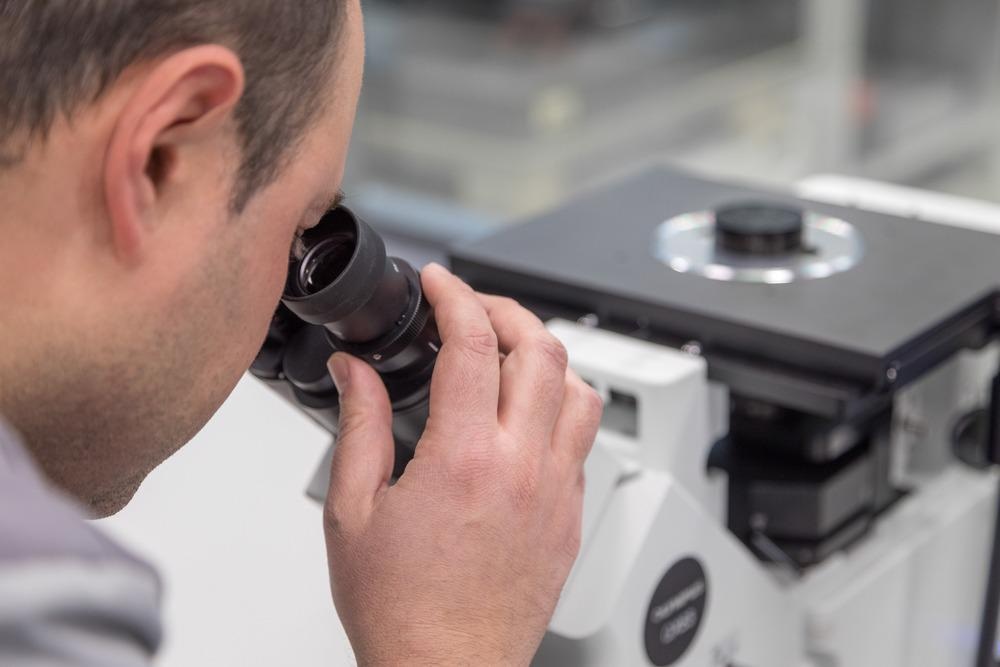In a study published in the Journal of Alloys and Compounds, a group of researchers synthesized the Ti3C2TX@NiO heterostructure by evenly depositing NiO nano-sheets on a Ti3C2TX substrate and then incorporating the composite into a microporous hydrogel using low-temperature graphene oxide (GO).

Study: 3D Hierarchical Ti3C2TX@NiO-Reduced Graphene Oxide Heterostructure Hydrogel as Free-standing Electrodes for High Performance Supercapacitor. Image Credit: Jose M. Peral Photography/Shutterstock.com
The ensuing 3D hierarchical Ti3C2TX@NiO is due to the synergistic impact between each component and the 3D porous linked structure. RGO nanostructured hydrogel combines the advantages of being extremely conductive and exceptional pseudo-capacitive and considerably reduces Ti3C2TX@NiO clustering and boosts surface utilization.
Supercapacitors: The Sustainable Energy Resources
In this world of technological advancements and developments where energy storage and energy, in particular, is becoming a nuance because of the energy crisis, supercapacitors have played a vital role in many developments and advancements.
They are easily applied to integrate sustainable energy resources and have many applications because of their fast charging and discharging, longer life spans, and good rate stability. This property leads to two different categories of supercapacitors which are double-layer capacitors that are electrochemically used (EDLC) and the other one is pseudocapacitors.
EDL capacitors are those in which the charge is stored at electrodes and in the electrolyte interface via rapid ion processing of adsorption or desorption. The second, known as pseudocapacitors, involves energy storage by a Faradaic process, involving a faster reversible reaction that is redox acting on both surface and the material intrinsically. Supercapacitors can further be divided into two main categories based on electrode materials, symmetric and asymmetric.
Symmetric supercapacitors usually refer to devices with the same electrode materials that are also based on the same mechanism of charge storage. On the other hand, asymmetrical supercapacitors consist of two different electrode materials dependent on different charge storage mechanisms.
MXenes as Promising Candidate for Energy Applications
Recent developments have established a two-dimensional transition metal known as MXenes. These nanomaterials have a range of excellent properties such as higher redox activity, great metallic conductivity, versatile chemistry of surface, and excellent mechanically stable properties.
MXenes have many applications in electrocatalysis, electrochemical energy storage, electromagnetic interface shielding, etc. Generally speaking, MXenes are the production of a material that involves the etching that is selectively done with the help of acidic solutions where a transition metal, the element used as a substrate, and either carbon or nitrogen are used combining to form a MAX phase.
Limitations of MXene
MXene has limitations that are mainly related to functional groups at the surface and the defects on surfaces formed because of the etching process, which has a negative influence on mechanisms of energy storage.
3D Hierarchical Ti3C2TX@NiO-RGO Heterostructures
To avoid discrepancies in MXenes, a newer process is introduced where the existence of functional groups and defects can be easily converted into other processes such as in-situ growth, and then the second phase that is derived is combined with Ti3C2TX with the help of chemical bonds leading to the formation of synergetic heterostructures with that of higher stability structurally.
Also, to stop the self-stacking of 2D MXenes, integrating Ti3C2TX @NiO heterostructures into a 3D interlinked porous network is a probable solution. Sol-Gel method is used as it is a more easy and low-cost process than others, but it has its downfall when you look at the difficulty with which the anisotropic inner sheets cross linkings are assembled.
Research Findings and Conclusion
For the first time, the 3D structured Ti3C2TX@NiO-RGO heterostructure hydrogel has been successfully produced using an efficient, multi-step technique and employed as freestanding SCs electrodes.
This heterostructure makes adequate interaction between both Ti3C2TX and NiO nanosheets, resulting in strong bonding between high-rate Ti3C2TX and high capacitance.
NiO can not only offer plenteous active sites for making effective use of pseudocapacitive during the fast electrochemical reaction but also reduce the electrolyte permeation length. Furthermore, the 3D mesoporous design efficiently avoids Ti3C2TX @NiO heterostructure agglomeration, resulting in a rapid ions/electron transport mechanism and a large electroactive surface, enhancing electrochemical performance greatly.
This research provides the path for bettering the overall properties of Ti3C2TX -based materials, implying that heterostructure hydrogels are viable options for high-energy SCs.
Continue reading: How MXene Nanomaterials Are Unlocking Future Nanotechnologies
References
Chen, W. et al. (2022). 3D Hierarchical Ti3C2TX@NiO-Reduced Graphene Oxide Heterostructure Hydrogel as Free-standing Electrodes for High Performance Supercapacitor. Journal of Alloys and Compounds. Available at: https://www.sciencedirect.com/science/article/abs/pii/S0925838822000056
Disclaimer: The views expressed here are those of the author expressed in their private capacity and do not necessarily represent the views of AZoM.com Limited T/A AZoNetwork the owner and operator of this website. This disclaimer forms part of the Terms and conditions of use of this website.